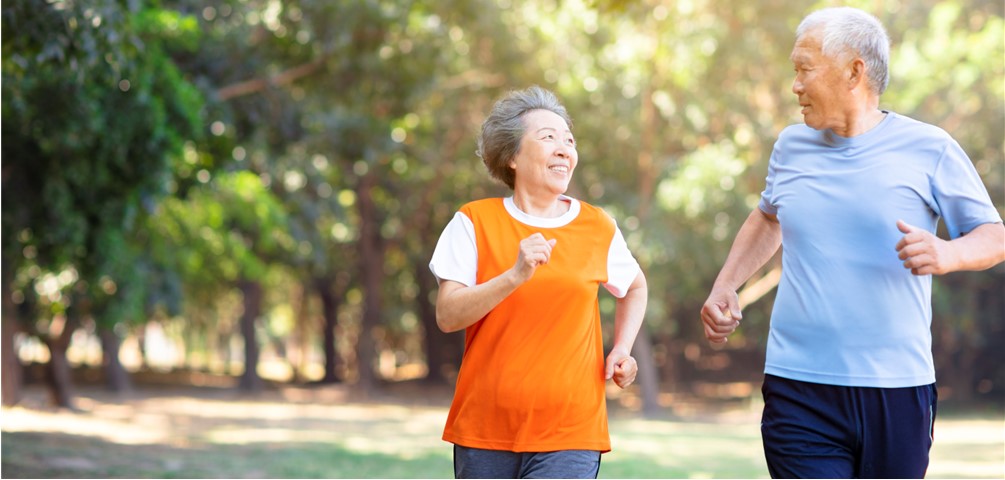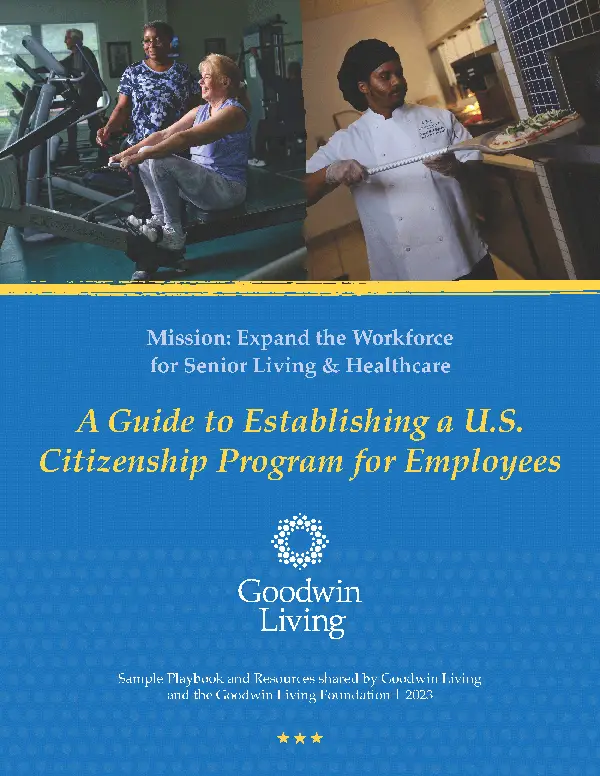
Live Comfortably - August 18, 2021
By Leslie LaPlace
Autumn may be just around the corner, but here in the D.C. metro area, the heat and humidity can linger into October. Those who saw warm, sunny days as an opportunity to begin an exercise regime may find themselves tiring quickly in the hot weather. Heat and dehydration can also lead to heat exhaustion or heat stroke. And older adults are especially susceptible to heat stroke, a dangerous condition that can damage the brain or internal organs, or even lead to death.
These risks don’t need to keep you from getting in a healthy workout. Keep these five tips in mind the next time you plan to exercise in the heat.
When we exercise, we generate internal heat. In very hot (and humid) weather, our body heat rises even more and we expend energy to power our muscles and regulate our temperature. The same run, walk or ride that felt tolerable during cooler weather takes extra energy as we combat the heat of the atmosphere around us.
Sweating is one way our bodies regulate our internal temperature. When our internal temperature rises, our sweat glands release water onto our skin, which cools us down as the higher temperature on our skin evaporates the water. This means that our bodies lose water as we sweat, which can quickly lead to dehydration.
To keep yourself from getting dehydrated, drink water at least an hour before heading out to exercise, and continue to drink while you’re working out. Make sure to also rehydrate when you’re finished with your workout.
If you’re exercising for an hour or less, nice cold water is the best choice because it is absorbed pretty quickly and will help keep your body cooler. If you’re going to exercise for longer than an hour, choose diluted fruit juice or a sports drink to replenish your sodium and electrolytes as you hydrate. Sodium, an electrolyte, helps regulate your body’s fluid balance and maintain normal blood pressure. Drinking too much water without added electrolytes can lead to a condition called hyponatremia, which means the concentration of sodium in your blood is abnormally low.
Your body needs fuel to exercise, though you should take care when and how much you eat before a workout. Your body creates heat in the digestion process — not what you want when you’re already hot. A heavy meal will take longer to move through the digestive process. A light meal is a better option — just put an hour between eating and your workout in the heat. If you had a heavy meal, you’ll want to wait two to three hours before your hot outdoor exercise.
What about eating after exercise? Focus first on replenishing your water and electrolytes. A light snack that combines carbohydrates and protein will also help replenish nutrients and repair broken down muscle tissue. Wait until you’ve cooled off to eat a heavier meal, since digesting food will delay getting your body back to its usual temperature.
Another way your body cools itself is by sending more blood to circulate through your skin. Any damage to your skin or the underlying tissue prevents your body from being able to air condition itself efficiently. To protect your skin, start with sunscreen and wear loose, lightweight clothing that blocks the sun. Try to avoid materials like cotton that keeps the heat in. Instead opt for sweat-wicking athletic clothing that allows the skin to perspire and cool. Wearing a hat will also help to protect your skin and head from damaging UV rays.
One of the simplest ways to avoid overheating during exercise is to go out earlier in the morning or later in the evening than you might in other seasons. The summer air temperature tends to be cooler in the mornings and evenings than it is at midday.
Another option to consider is finding a location that offers a lot of shade. Keeping out of the direct sun will help to keep you cool.
The warning signs of heat exhaustion include fatigue, extreme thirst, nausea, headache, shortness of breath, rapid breathing, muscle cramping and a general sense of lightheadedness. The warning signs for heat stroke (a much more serious emergency that requires immediate medical attention) include confusion, seizures, passing out, extremely high body temperature (above 103oF-104oF) and hot, dry skin or profuse sweating. Older adults need to be especially careful when exercising in heat because their ability to regulate their body temperature is less efficient.
One final tip – it’s smart to exercise with a partner in the heat. If either of you starts to feel seriously hot or shows signs of cognitive dysfunction such as sudden confusion, get off the path and out of the sun as much as possible and call for help. Cool down the head, face, armpits and groin areas, which have the highest blood flow. Call emergency services or go to an emergency facility immediately if either one of you is showing signs of heat stroke.
Maintaining a consistent exercise routine is difficult enough on its own. The weather doesn’t have to make it any harder. There are many more ways to protect yourself and others when you exercise. By following these five tips, you can get a healthy workout in no matter the temperature! Share these tips with your workout partners and take control of your physical health today!
____________________
Leslie LaPlace, Fitness Manager at Goodwin House Alexandria, is self described recovering Software Development Project Manager. Leslie parlayed a lifelong love of and belief in the restorative power of exercise into a satisfying career working with adults ages 55 and older. She believes that staying active can help reduce aches and pains—It’s also a great anti-aging remedy. She has more than six years’ experience working with seniors at Arlington County, The Jefferson, Goodwin House Bailey’s Crossroads and Goodwin House Alexandria. Leslie is a certified personal trainer and aquatic instructor who loves creating a positive and fun training experience. She believes that it’s never too late to improve your strength and balance!
